Moondrop Space Travel 2: Is Excellent Sound Enough?
Wireless has typically been where Moondrop falters, but with the Space Travel 2 it seems they've finally found their footing. Join listener as they explain why they think the Space Travel 2 might be Moondrop's best product to date.

Moondrop is far from a household name, so if you haven't heard of them, they damn near dominate the niche world of “audiophile IEMs.” If Moondrop have excelled at anything up to this point, it’s been marketing themselves to IEM fanatics based on things they care about: anime girls ("waifus") and sound quality. With their newest true wireless in-ear monitor the Space Travel 2, Moondrop has not deviated from the formula that made them so successful.
While in the past wireless products from Moondrop typically lacked when it came to features, they have slowly been refining their wireless products with new features. In fact, this time I think they’ve really nailed it: Space Travel 2 is easily my favorite Moondrop product to date.
I know that’s a lofty claim to make about a product from a company most people would agree already has a bunch of solid options, so let’s dive in and talk about why I think this is one of the best IEMs you can buy anywhere near this price, regardless of if you need wireless or not... but why you still may not want to buy it.
Build, Design, Comfort, & Accessories
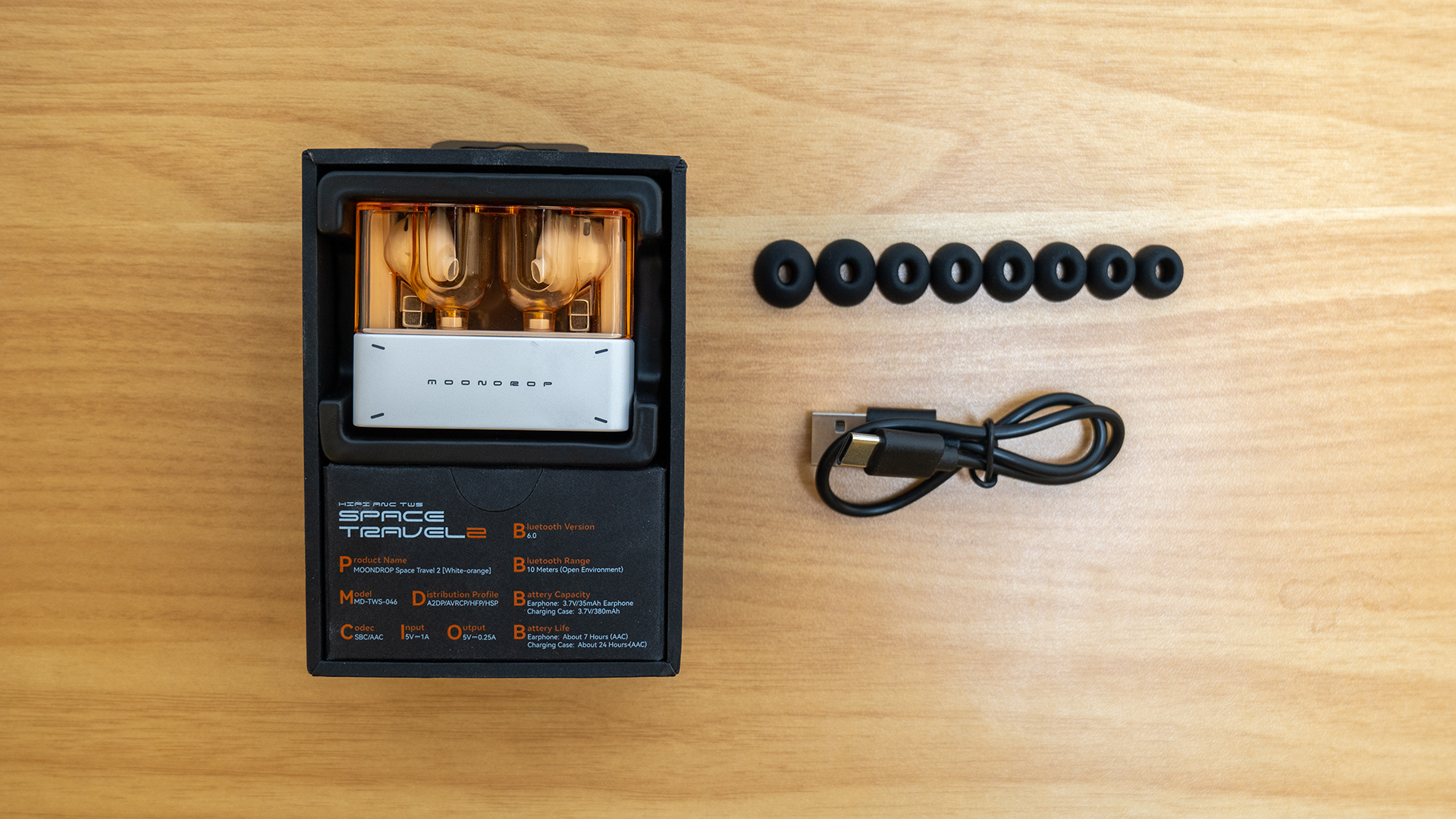
Starting with the accessories, we get the IEMs themselves, four sizes of oval-shaped eartips, the oft-maligned “lidless” case, and a USB charging cable. A pretty scant package until one remembers that the whole package is $30 USD. I was positively surprised how many sizes of eartips were included, as even some IEMs five times this price only come with three sizes.
That said, the main downsides are that the USB charging cable is USB-A on one end (which may bother some people who don’t have any USB-A ports anymore) and the lidless case. One can purchase an additional “lid-attached” case from Moondrop to go around the existing charging case, but personally I don’t mind the lack of lid, and more importantly, extra bulk around the already slightly-too-large charging case wouldn’t be ideal.
In terms of the quality of life and comfort that comes with this design, I’d say it’s honestly pretty poor. Firstly, the connectivity is a bit rough, sometimes there’s a little bit of lag between the two earpieces that typically resolves itself near-immediately, or there will be big errors in the ANC processing that causes loud low-frequency thrumming noises that, again, resolve themselves rather quickly. These things can definitely be annoying when you’ve paid money for a product that you’re hoping works without issue, so it’s worth keeping in mind: even though this product has things it absolutely nails, it’s still got some of the issues that people likely already expect from cheaper devices in this class.
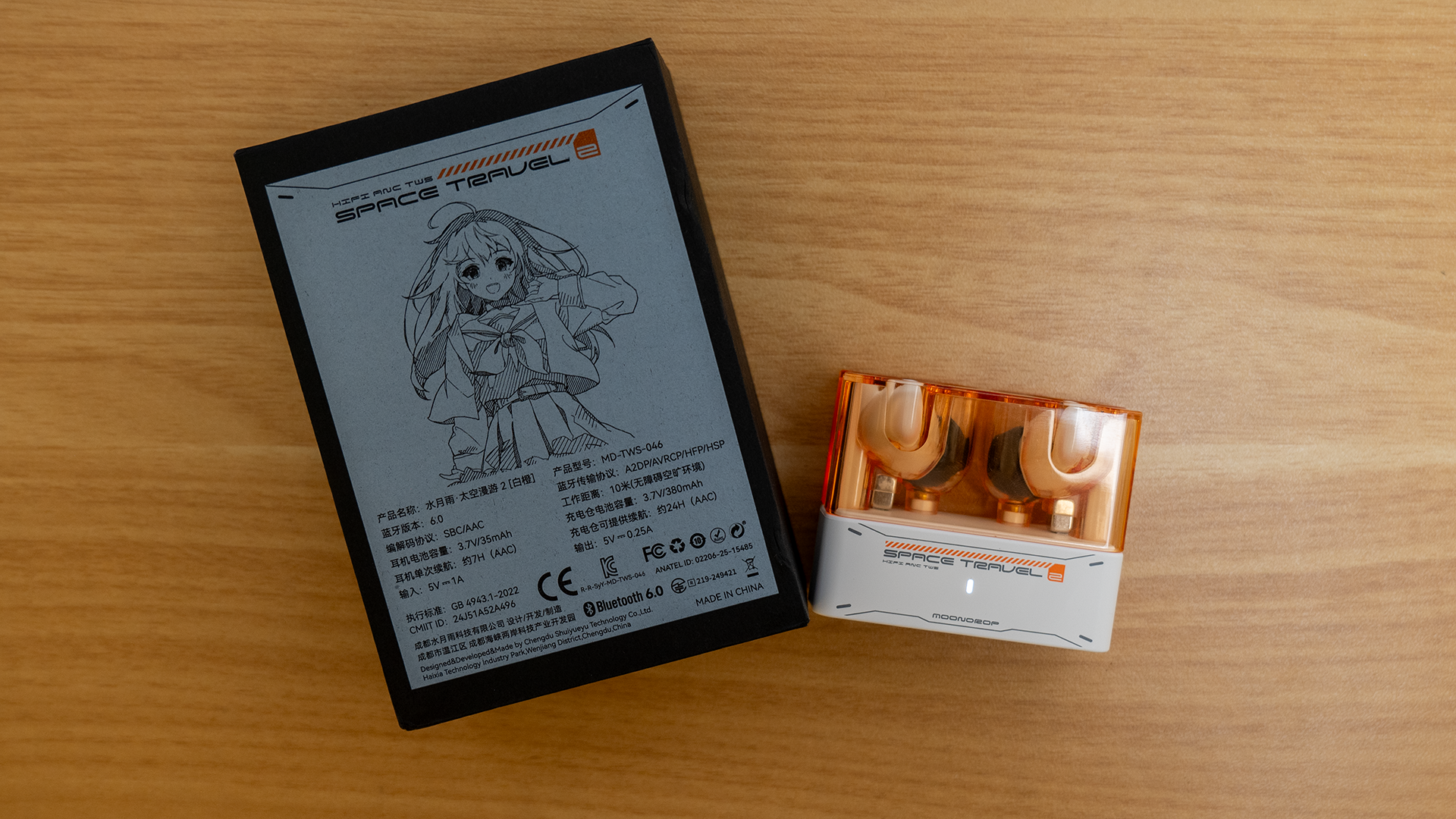
One big benefit with this kind of shell design has to do with the oval-shaped nozzle and eartips. For me at least, the oval shape works really well for keeping the seal consistent even if my mouth/jaw moves. So for example, when chewing or speaking I experience absolutely no seal breaks with the Space Travel 2, which can’t be said for most traditional wired IEMs with circular eartips and nozzles.
On the other hand, because the molding on the main shell of the earbud isn’t quite as well-considered as the AirPods Pro 2 it gets its inspiration from, there’s a little more discomfort on the top-back of my concha where the outer wall of the earbud rests against my ear. While the AirPods Pro 2 is easily an all-day wear for me, I wouldn’t say the same for the Space Travel 2, which consistently seems to make my ears sore after around two hours.
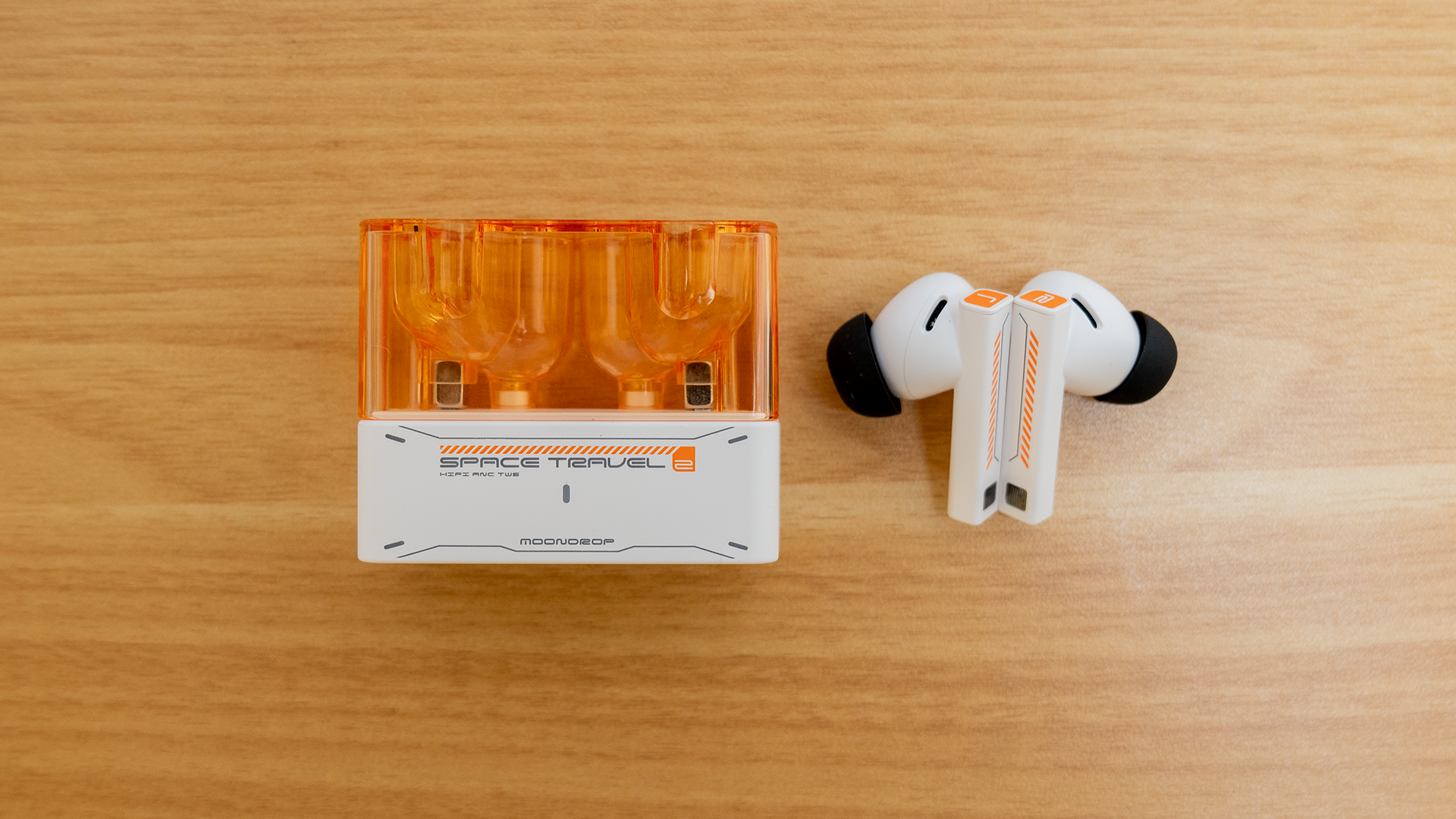
Touching briefly on the look, I’m grateful that they sent the orange and white version which reminds me a lot of the DUNU DK3001BD’s “cyberpunk” aesthetic. It’s clean, without going full gamercringe like the other black/green colorway this IEM can be had in. I don’t have any particular feelings about the look once in the ear, but I tend to like lighter colors on IEMs so I’m not particularly mad at it. If anything, the rectangular shape of the stems vs. the round earpiece bothers me more than the colors or graphics.
Regarding build quality, Space Travel 2 has very lightweight earpieces made from a plastic that doesn’t feel “premium” at all, but I doubt most people buying at this price range will be expecting something that feels expensive. Readers would just do well to keep in mind that Space Travel 2 feels a bit rough, and the price reflects that.
Features

ANC/Transparency mode
For those who want something with excellent ANC/Transparency mode… look elsewhere. Seriously, the Space Travel 2 does technically have these features, but they barely offer much cancellation or occlusion-reduction (respectively) at all.
Additionally, I found that the microphones located on the stems used for these features have incredibly low headroom, such that something as simple as opening a can of soda will cause them to clip and cause a disconcerting “pop” in your ears. If readers want class-leading ANC or transparency mode, the options from the big 3 (Apple, Bose, Sony) are still the best options by a country mile, and you should not buy the Space Travel 2 if you really need ANC or Transparency mode..
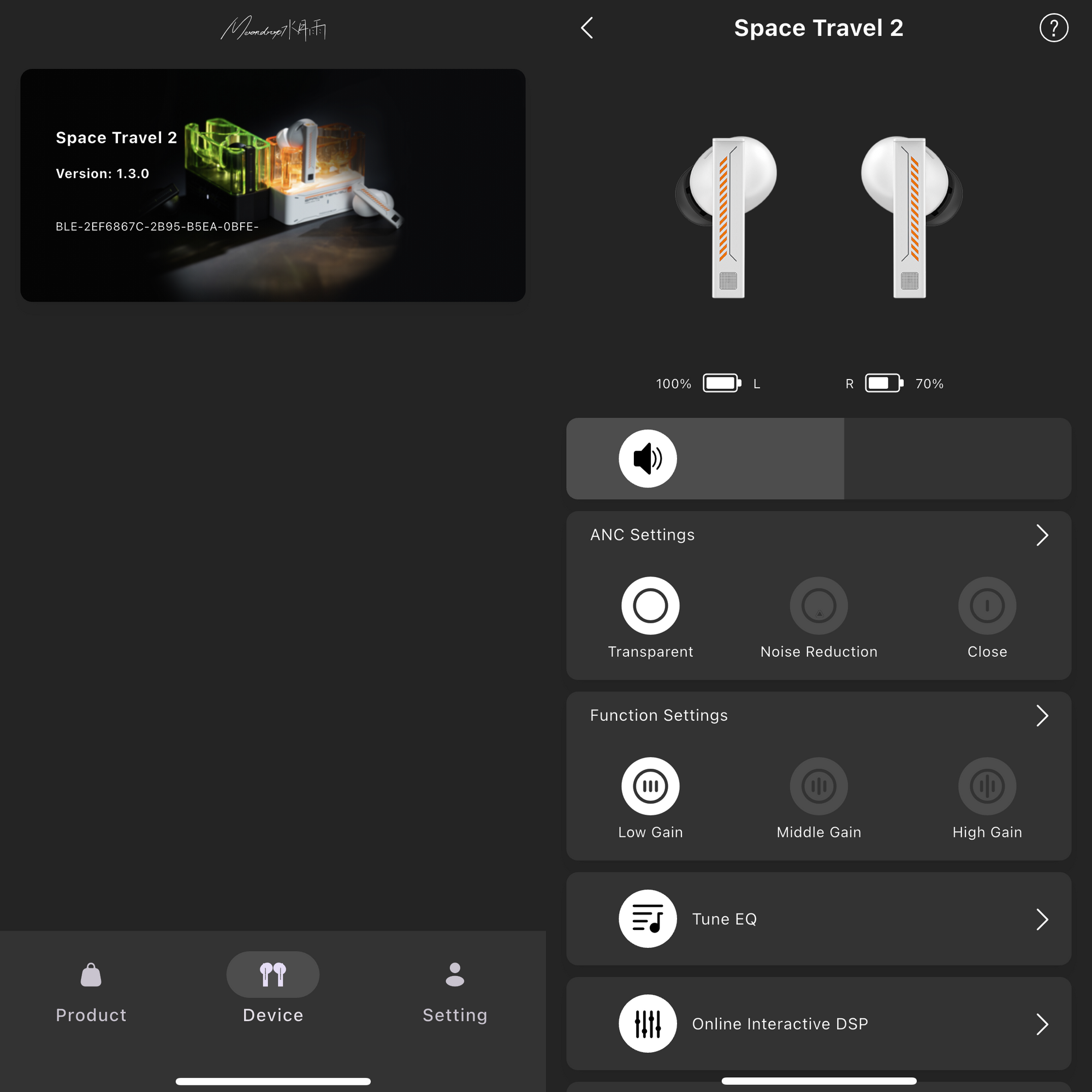
App features
The app itself is fairly barebones, with the main non-EQ functions being swapping between ANC/Transparency mode (can also be done with a single Tap & Hold on one of the earpieces) and switching the gain modes between Low, Medium, and High gain.
Something worth noting is that the High gain mode is LOUD, and I don’t think people will need to use this unless they’re using a bunch of subtractive EQ. Speaking of which…
EQ
With these wireless IEMs from Moondrop, typically the main implementation of EQ will be preset-based, offering pre-made profiles to end users. Unfortunately, whatever EQ profiles are made available usually don’t actually fix the problems with the IEM, so it’s not really worth recommending them to use.
But this time, they’ve included only two presets besides the default: Bass+ and Bass-, both of which are just a 200 Hz first-order low shelf filter adding or subtracting 3 dB of gain respectively. We’ll talk later about why this approach to presets is actually better than what you typically get with Moondrop’s prior TWS IEMs, but for now let’s talk about how Moondrop has taken a massive step forward with this IEM.

With the introduction of the Space Travel 2, Moondrop updated their mobile application to allow—for select devices, including the Space Travel 2—5 bands of parametric EQ (PEQ)!
Even though this capability is, for some reason, not showing up all that much in marketing or reviews (and also isn’t an especially easy feature to find in the app), bona fide parametric EQ is the feature that anyone serious about sound quality should be getting excited about in a wireless device.
And while this addition of PEQ is truly a gamechanger for wireless products in this price range, the implementation is still meaningfully limited:
- There’s no pre-gain control to make sure one avoids clipping, so all EQ will need to be subtractive (cuts) to ensure no clipping occurs.
- Only peak filters are available, so no shelf filters
- Gain range extends up to +3 dB, which less than ideal as people tend to boost more often than they cut (but likely necessary to avoid clipping)
Even so, the inclusion of any full parametric EQ on a wireless audio product deserves to be called out and praised. Hell, most of the bigger companies making products in this class, even those with access to way better chips than whatever Space Travel 2 uses, don’t bother to include full PEQ with their products.
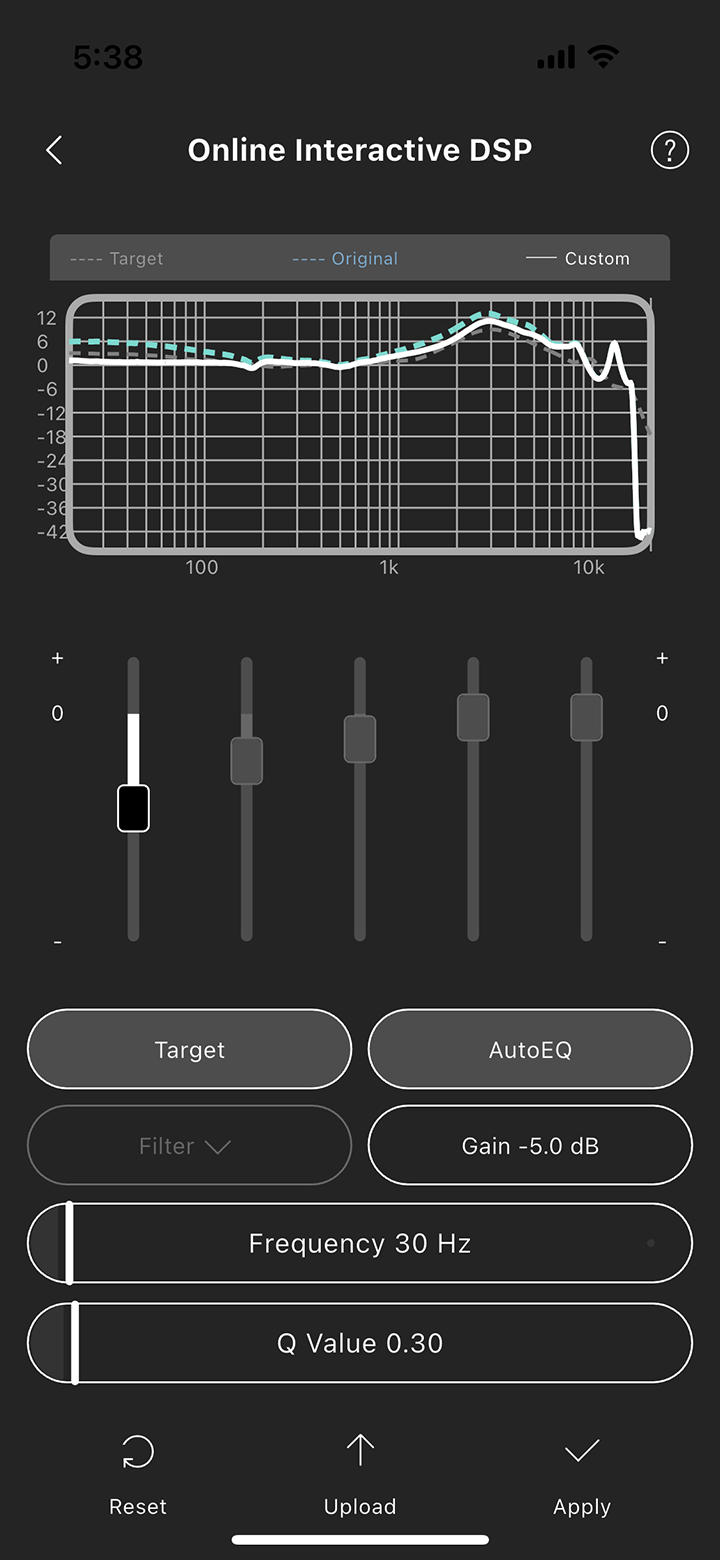
Despite its flaws of implementation, Space Travel 2’s EQ is especially great for two reasons.
For one, the EQ is saved to the local memory of the earbuds themselves, so if you switch between two sound sources, say between a phone and a computer, the sound won’t change between them.
Additionally, there are no longer unfortunate limitations on the available bandwidth for filters, eg. we can now add EQ points anywhere from 20-20000 Hz, whereas this was not previously available in the app. This means there’s more possibility for customization than was available with products like the DUSK on launch.
Using the included PEQ I was able to get, frankly, ridiculously good sound out of Space Travel 2, and this is why PEQ is so appealing: in the realm of headworn audio devices, what we hear and prefer is going to be extremely individual, so giving end users the tools to personalize their experience to their own anatomy and preference is the best way to optimize the sound quality of the product. Below is my preferred EQ for this IEM:
Pk — Frequency: 20 Hz — Gain: +3 dB — Q: 0.7
Pk — Frequency: 30 Hz — Gain: -5 dB — Q: 0.3
Pk — Frequency: 2000 Hz — Gain: -2.4 dB — Q: 0.7
Pk — Frequency: 4550 Hz — Gain: -1.2 dB — Q: 4
But for those of you who are already getting ready to enter the above values into the app, Moondrop actually went an extra step further!

They made it so all user-generated EQ presets can be easily shared simply by clicking “Upload” to upload the preset to their server, after which people can simply search the name of the preset and download it. This is a really cool benefit that I wouldn’t have expected to work as well as it does, but it’s made trying the litany of currently available presets a really enjoyable process (even if the community-made presets I find really aren’t great sounding).
Moondrop deserves full credit for listening to user complaints and actually putting in the work to take what was their biggest weakness (software) and turning it into, well, the main reason I would recommend this product over any random wireless earbud one would find on Amazon, and maybe even more expensive/premium options if sound quality is the foremost concern.
Sound
What makes all of this even better, and what really makes Space Travel 2 the kind of IEM that I can blindly recommend to almost anyone reading this, is that the IEM is already well tuned, even with no EQ.
This isn’t just a situation where it sounds “okay for the price” or “okay for a wireless option” either. Space Travel 2 genuinely sounds GOOD.
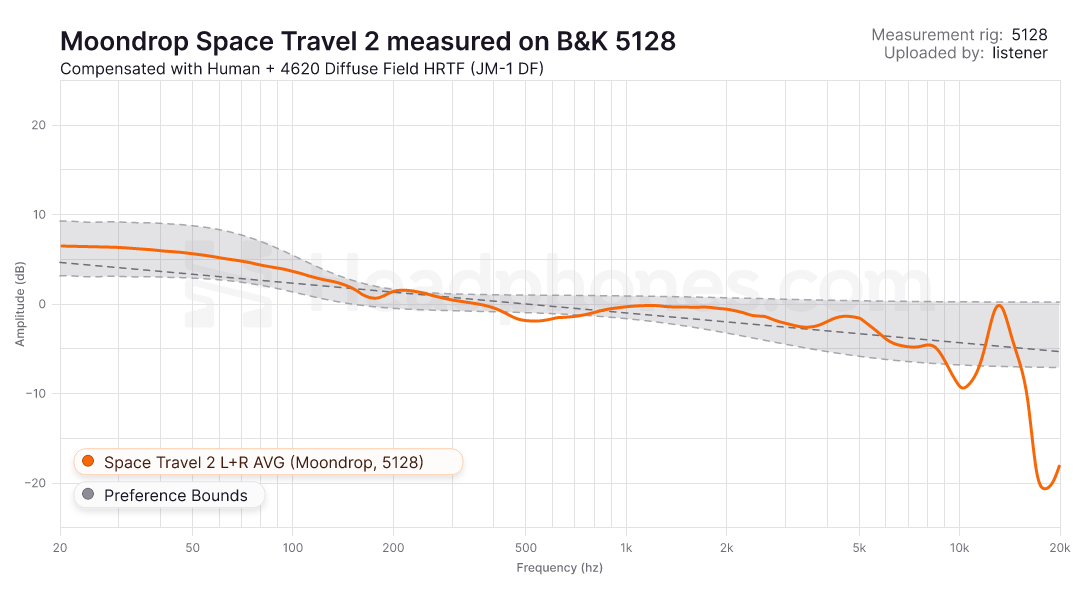
The above measurement is provided by Moondrop, our own measurement data on the B&K 5128 is currently pending (Data taken on IEC 60318-4 couplers should not be used to evaluate this IEM)
Space Travel 2 reminds me a bit of my old budget favorite the Truthear Hola, with just a bit more clarity in the mids and less bass and treble. Which is to say: Space Travel 2 is an inoffensive, warm-neutral presentation that doesn’t boost bass and treble all that much. In case the reader hasn’t paid attention to my prior IEM reviews, it’s worth making it clear: this is exactly the kind of thing I tend to go for.
Space Travel 2 has enough of a bass emphasis to lend palpable fullness to bass guitars and kick drums, but doesn’t have the exaggerated separation between bass and midrange that comes with a bass shelf that stops completely around 200 Hz, like the Harman IE target. It also doesn’t have the overbearing mid-bass fuzziness and glow that comes about from the “tilt + bass shelf” options we’ve seen like the DUNU DaVinci, Kiwi Ears KE4, or Hisenior Mega5EST.
Instead, here we get a bass elevation that’s much more gradual in its slope and much more modest in its magnitude, which means there’s a slight warmth and fullness, but there’s very little incoherence. This is most noticeable on singers, pianos, or guitars, where an instrument/voice doesn’t sound radically different when moving between lower and higher pitched parts; on sets with less coherence between bass and midrange, they can sound like their volume or timbre in the mix jumps around too much as their pitch climbs or descends.
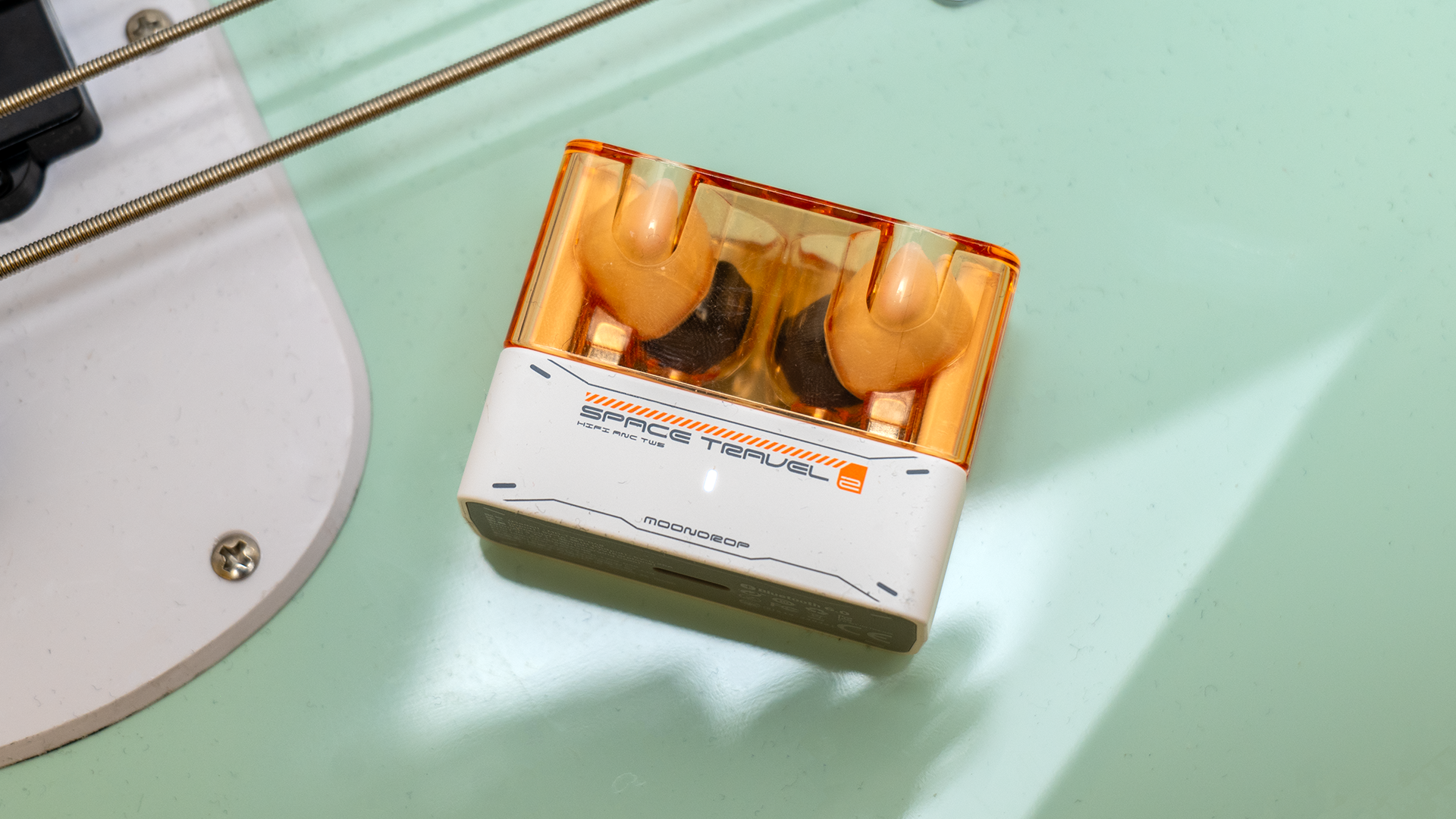
Bass is easily one of my favorite parts about the Space Travel 2, as it actually reminds me quite a bit of the Softears Volume S I enjoyed earlier this year. While it’s not quite as intense as the Volume S, it has a similar characteristic of highlighting bass overtones instead of fundamentals, which results in a textured, snappy presentation that still has what I’d call an appropriate level of bass emphasis.
Now, I could see a scenario where the bass on Space Travel 2 isn’t bassy enough for a typical consumer, because it seemingly prioritizes balance over emphasis, but this is where the extremely simple Bass+ EQ preset comes into play. Want more bass but don’t want to fiddle? Well, it’s extremely easy to add a bit more, and thankfully the choice of corner frequency and boost ends up working fairly well with the rest of Space Travel 2’s tuning.
Moving to the midrange, Space Travel 2’s got a very minor tilt towards warmth in the low midrange, and but I also detect a bit of an emphasis in the upper midrange. These two aspects represent minor colorations that balance each other out quite well. In addition to the slight 2 kHz forwardness, I also hear a bit of a glare to the upper midrange around 3.2 kHz that the measurement doesn’t seem to show, and it lends a bit of a “concrete-like” quality to certain percussive elements, but this is a minor nitpick.
In terms of its overall balance, Space Travel 2’s midrange is pretty solid, though I would say for my taste it’s the weakest part of the stock presentation here, again similarly to the aforementioned Volume S. While I rarely if ever felt like the timbre of voices, drums, guitars, strings, or pianos was disastrously wrong, I did sometimes notice the upper midrange causing things to sound a little small, cheap, and plasticky. Otherwise, the midrange here is totally workable for $30, but this is also where Space Travel 2’s available EQ really came in handy for me.
The treble is likely to be the most contentious part about this IEM for people who aren’t me, because it’s firmly tilted to the dark side of things in terms of overall level. Personally, I think the treble is actually handled exceptionally, and it’s one of the main reasons I like the Space Travel 2 so much, but I do have to acknowledge that people with different anatomy are likely to find it quite dark.

For me, I don’t get even an ounce of excess upper treble glassiness, sizzle, or shimmer, so cymbals almost always sounded natural in terms of their volume in the mix and their decay characteristics. I also don’t get any mid-treble sibilance or spice, which means pop vocalists that aren’t de-essed enough are smoothed in a pleasing way. I think I detect an ever-so-slight emphasis in the lower treble or right at the length-mode around 6-7 kHz, but this could also be the upper-midrange emphasis coloring things like cymbals to sound just a bit more crashy than smooth.
Other than that, Space Travel 2 is an IEM I did not need to EQ at all to enjoy, and I found that even though the energy overall is perhaps slightly dark, it meant that almost nothing ever sounded fatiguing or annoying. Others should again note, if I’m saying it’s slightly too dark, this means it may end up being very dark for certain listeners, so take this evaluation with necessary grains of salt.
But overall? This thing is tuned very well. I’ve had a great time listening to it, and really had to put my ear to work in order to find flaws to talk about because Space Travel 2 is one of the rare products that is well-balanced enough that I can just listen to it without constantly being reminded of its imperfections.
Presentation
Now, because of the slightly warm, slightly dark tuning, I think people will probably be unsurprised to hear that it’s not shockingly good when it comes to any aspects of subjective performance.
Soundstage sounds firmly in the head, though thankfully not oppressively so. Presentation of detail is on the smooth, if slightly aliased side, as clearly Space Travel 2 is more concerned with listenability than using coloration to unearth new aspects of the music.
Where I’d say Space Travel 2 may surprise people is in the realm of dynamics, where I found it to be a pretty competent balance of snappy, poppy, and full. I should note that I still think Space Travel 2 has a bit of the problem most IEMs have where note weight isn’t really convincing and the perception of size is firmly on the small side, but I did find myself enjoying the sense of impact that it lends to well-mixed drum recordings.
Again, it’s an inexpensive IEM that seemingly was tuned with the express purpose of avoiding exciting coloration. But this means for IEM fans that are chasing novelty and coloration, they may not find much to chew on with Space Travel 2. For me though, who wants to avoid these colorations whenever possible, Space Travel 2 is near-exactly the kind of presentation I want, where roughly equal attention is given to all aspects of the tuning and I get to hear my music unperturbed by any extra silliness.
Comparisons
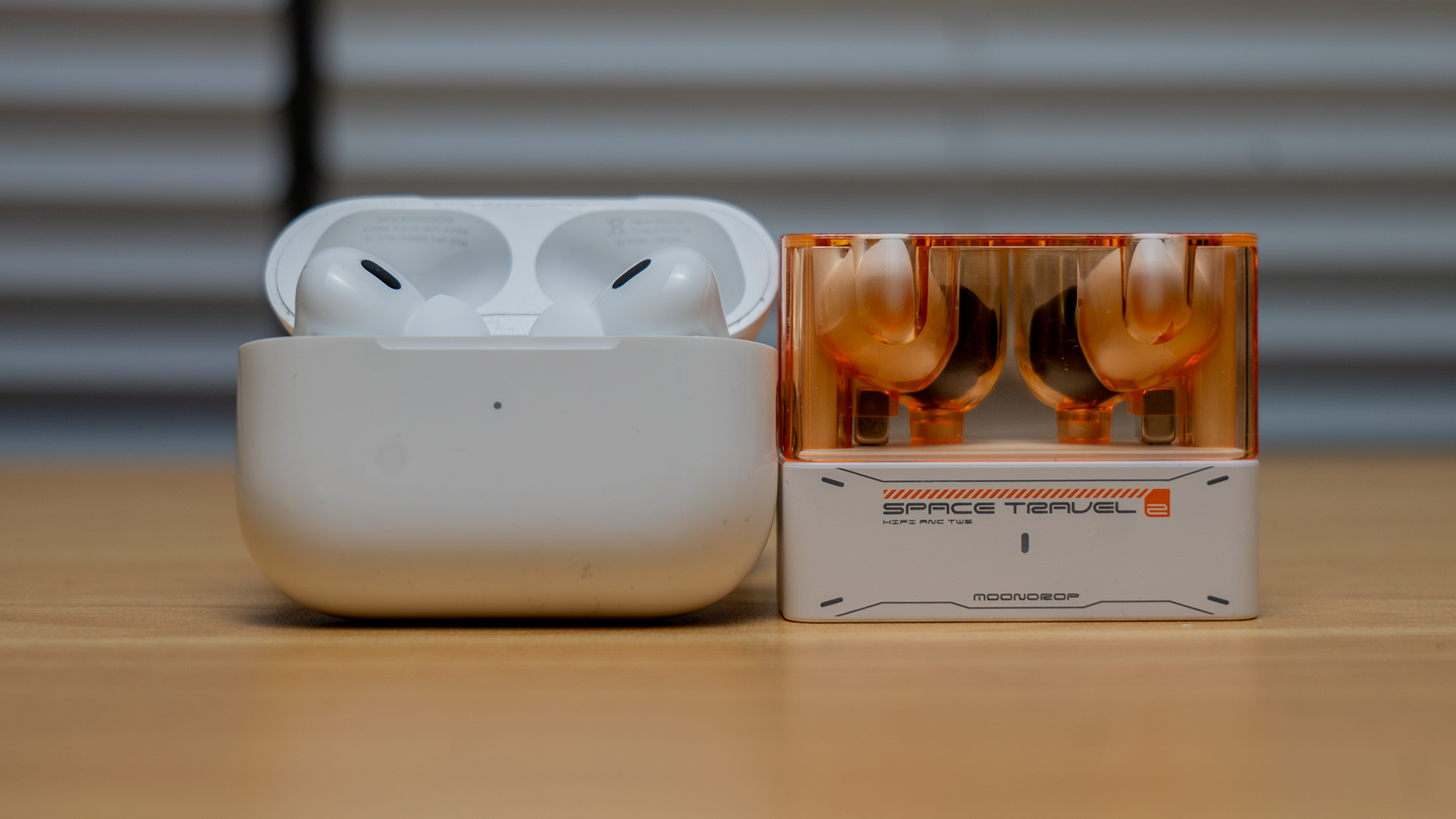
Vs. Apple AirPods Pro 2
Simply put, this is the one to beat… and Space Travel 2 utterly fails to compete when it comes to anything but sound quality. AirPods Pro 2 absolutely annihilates the Space Travel 2 regarding comfort, quality of life, and features, where the latter is frankly quite poor due to its mediocre comfort, ANC, transparency mode, and pairing smoothness.
However, the Space Travel 2 is probably the first wireless IEM I’ve come across that I think I’d prefer sonically over the AirPods Pro 2. It has some similarities to AirPods Pro 2 in the upper treble, while having a bit more neutral of a presentation overall that I think makes it more fun to listen to.
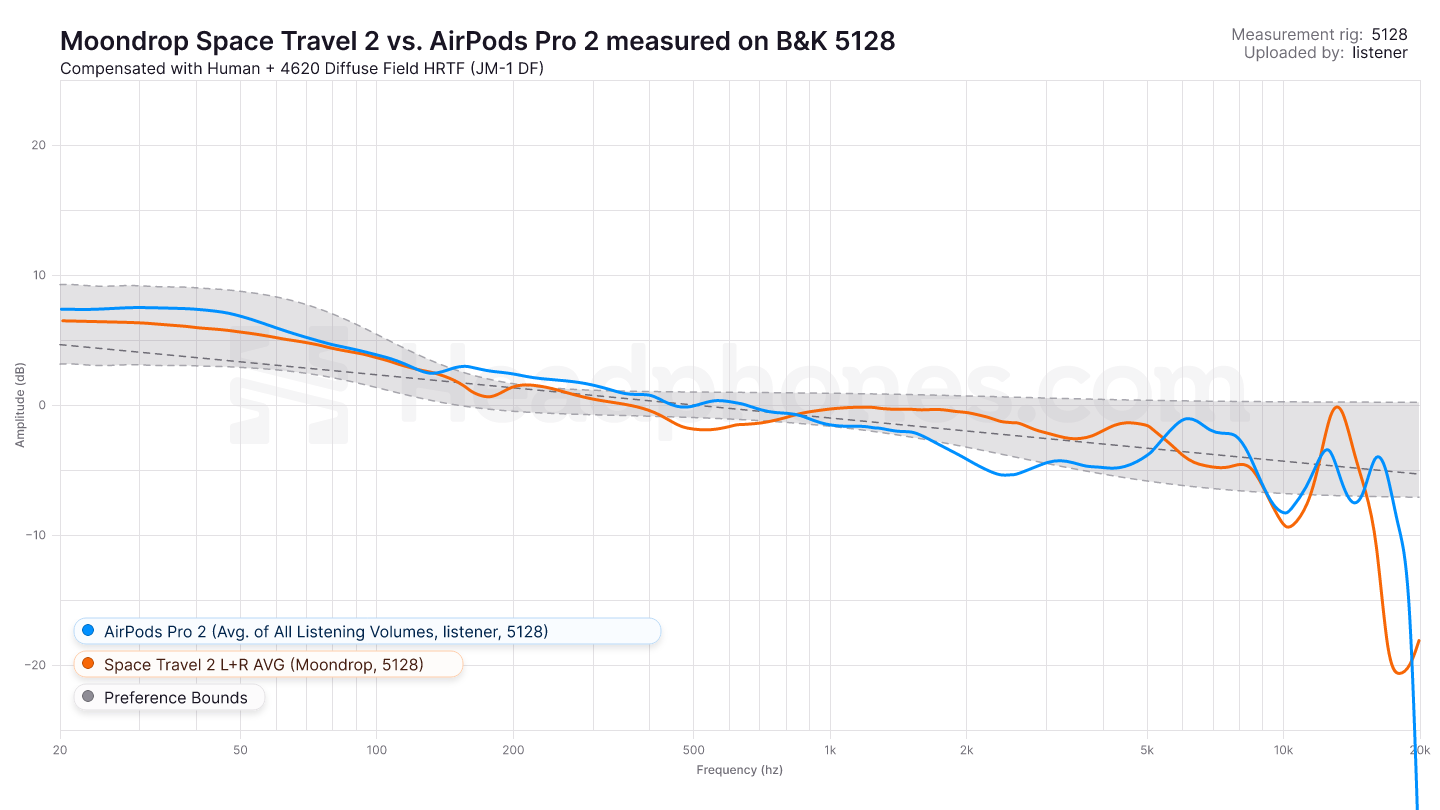
I should note, the above two measurements are not exactly comparable. The AirPods Pro 2 has a system that ensures it measures almost exactly the same in whatever ear canal it’s placed in (under a certain frequency), while the Space Travel 2 lacks such a feature. This means the AirPods Pro 2 almost certainly measures like you see above in your ear canal, while the Space Travel 2 may in fact deviate in a few important ways below 5 kHz or so.
For example, I hear a bit more in the upper midrange with Space Travel 2 than the above measurements suggest. You may hear less, or hear more lower midrange than is shown, or less bass than is shown, etc. So just keep in mind that the comparison I’m making is based on how they actually sound to me, not just strictly how they measure.
While the AirPods Pro 2 does have what I’d call exceptional bass quality, I find its midrange too relaxed for most things except movies, so voices and pianos specifically often sound annoyingly distant and indistinct, with most of their detail and presence relegated to the lower treble which also causes their timbre to be meaningfully defined by their driest, sandiest aspects. Additionally, its mid treble is too forward for me, which means most things with treble presence end up sounding too sharp, and a bit harsh.
Space Travel 2 goes a bit of a different direction, opting for meaningfully less bass while filling in the upper midrange to be much more even-keeled sounding. While I think the Space Travel 2 may go a bit too far in this direction, perhaps being a bit lacking in bass presence or shouty for some people, it’s the presentation I chose to listen to when possible because the AirPods Pro 2 is simply more colored, and more cloyingly so.
It must also be said: AirPods Pro 2 has basically no capability for actually improving its sound through personalization, whereas the Space Travel 2’s 5 band EQ means that I can essentially make it sound better than any IEM I currently have (including AirPods Pro 2), while still having the benefit of wireless freedom.
Overall I think the AirPods Pro 2 is easily the more well-rounded product, and it’s still the one I’ll use daily going forward for when I’m just watching video content or joining voice calls. But when it comes to sound quality for music and “audiophile” features like EQ, the Space Travel 2 is a very compelling offering that people should absolutely be paying attention to, and I'd recommend it over the AirPods Pro 2 for people solely looking to maximize sound quality.
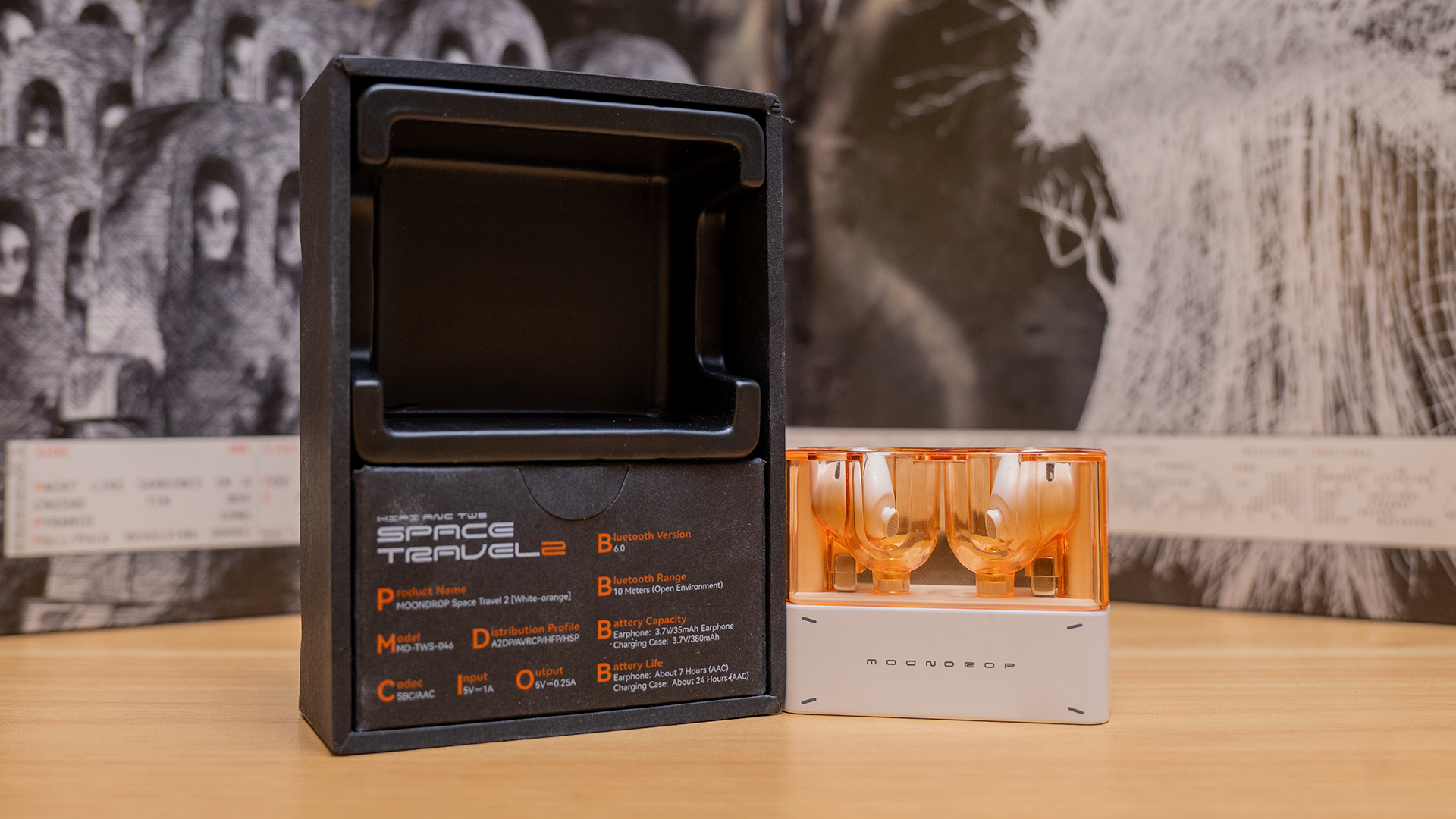
Conclusion
In case it's not clear at this point, I quite like the Space Travel 2. Due to its reasonable stock frequency response and inclusion of EQ, I’ve been able to make the Space Travel 2 sound bloody incredible... but the problem is that it’s not just about sound quality.
In terms of usability, I just don’t really think Space Travel 2 is gonna be all that pleasing for a lot of people to use. It’s not very comfortable, the connection integrity and pairing between devices isn’t quite as smooth as (much) more expensive competitors, the ANC and Transparency modes are near-entirely useless, and the anime child's voice in my ears when connecting, disconnecting, or switching modes is cringe.
But even with all of that, when it comes to sound quality Space Travel 2 is unreasonably good—even in stock formation—and when we consider how great this is as a baseline for EQ, and how good it sounds after EQ, it gets really hard to argue with the value it represents.
So yeah, if you really need top-tier ANC and Transparency quality, or really can’t deal with subpar comfort, I think Space Travel 2 is an easy skip.
But if you’re like me and sound quality and customizability is a very high concern of yours, I think the Space Travel 2 is an exceptional choice, and likely Moondrop’s strongest product to date.
